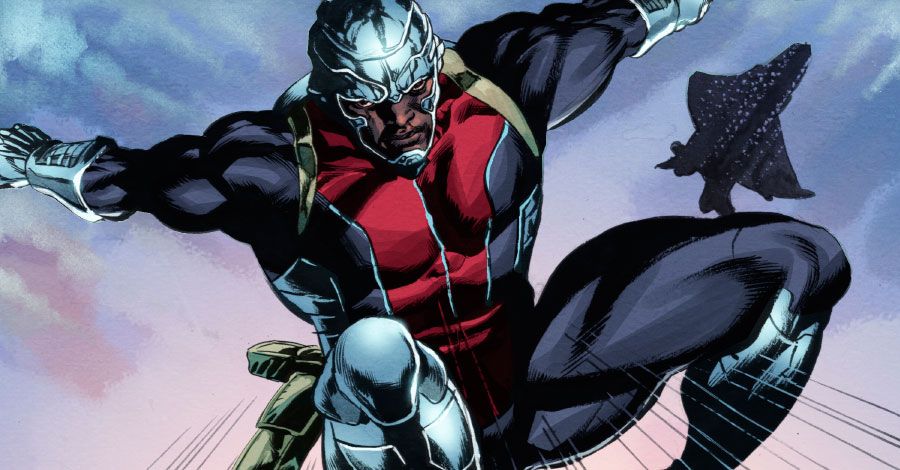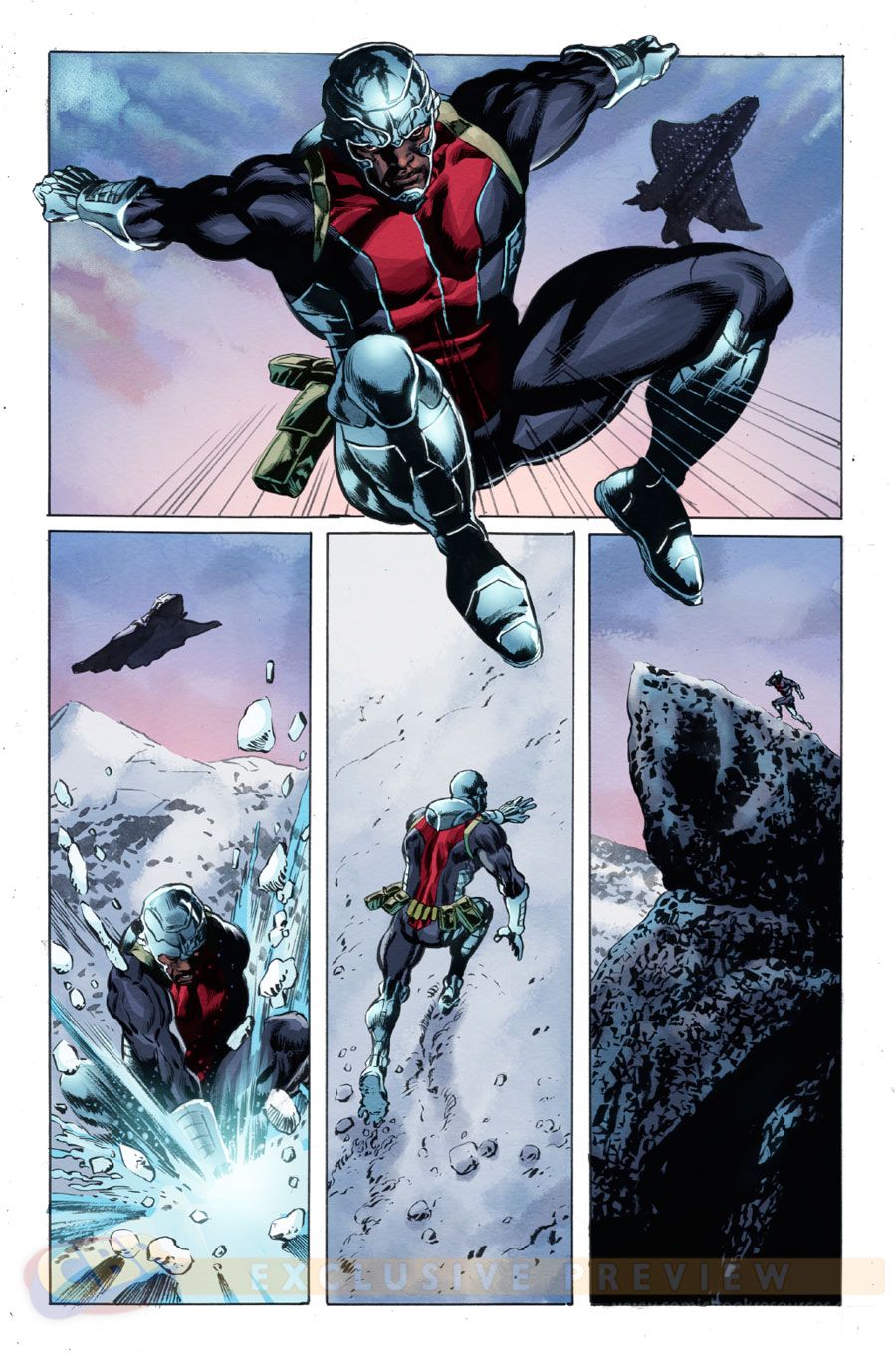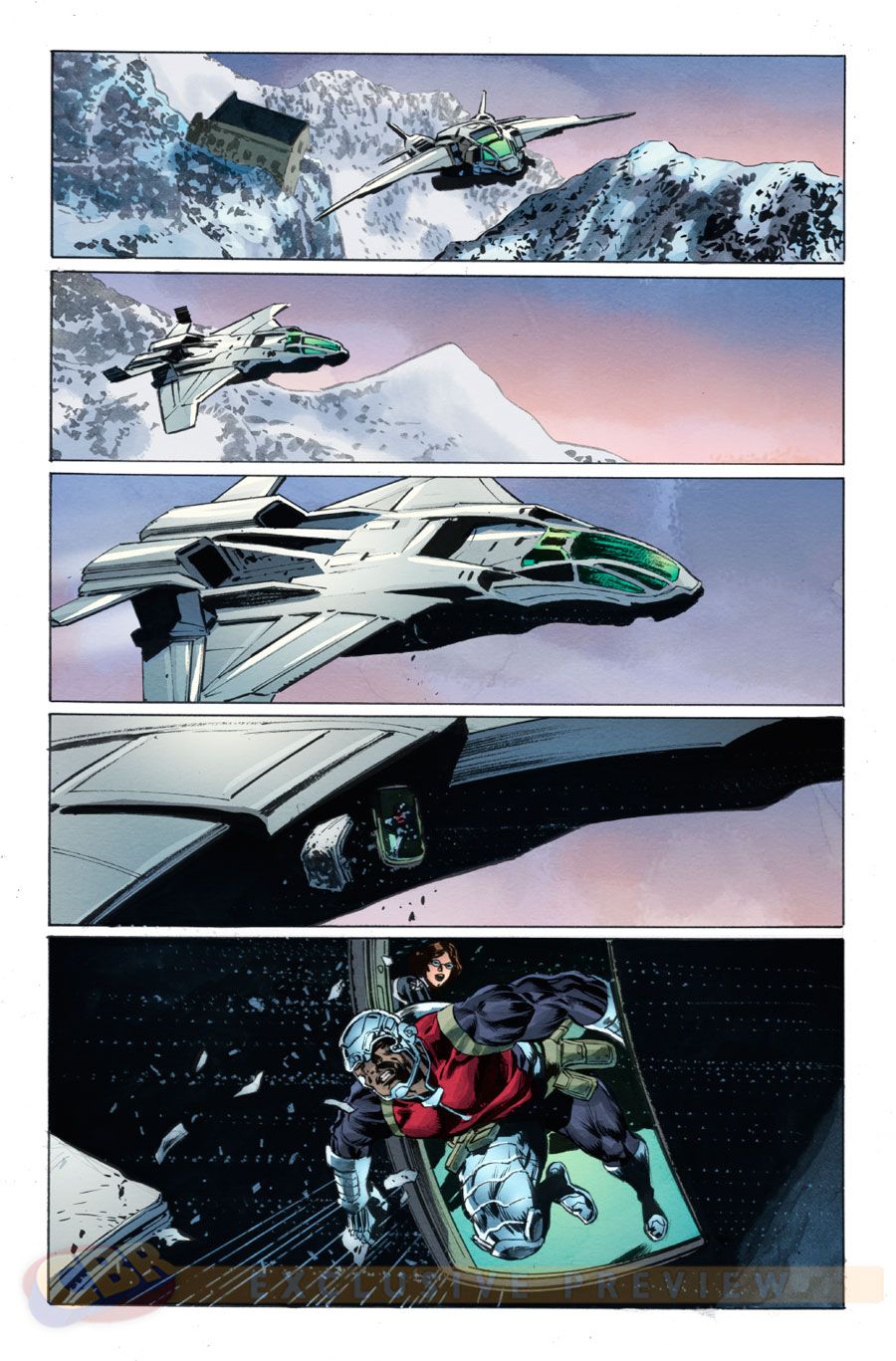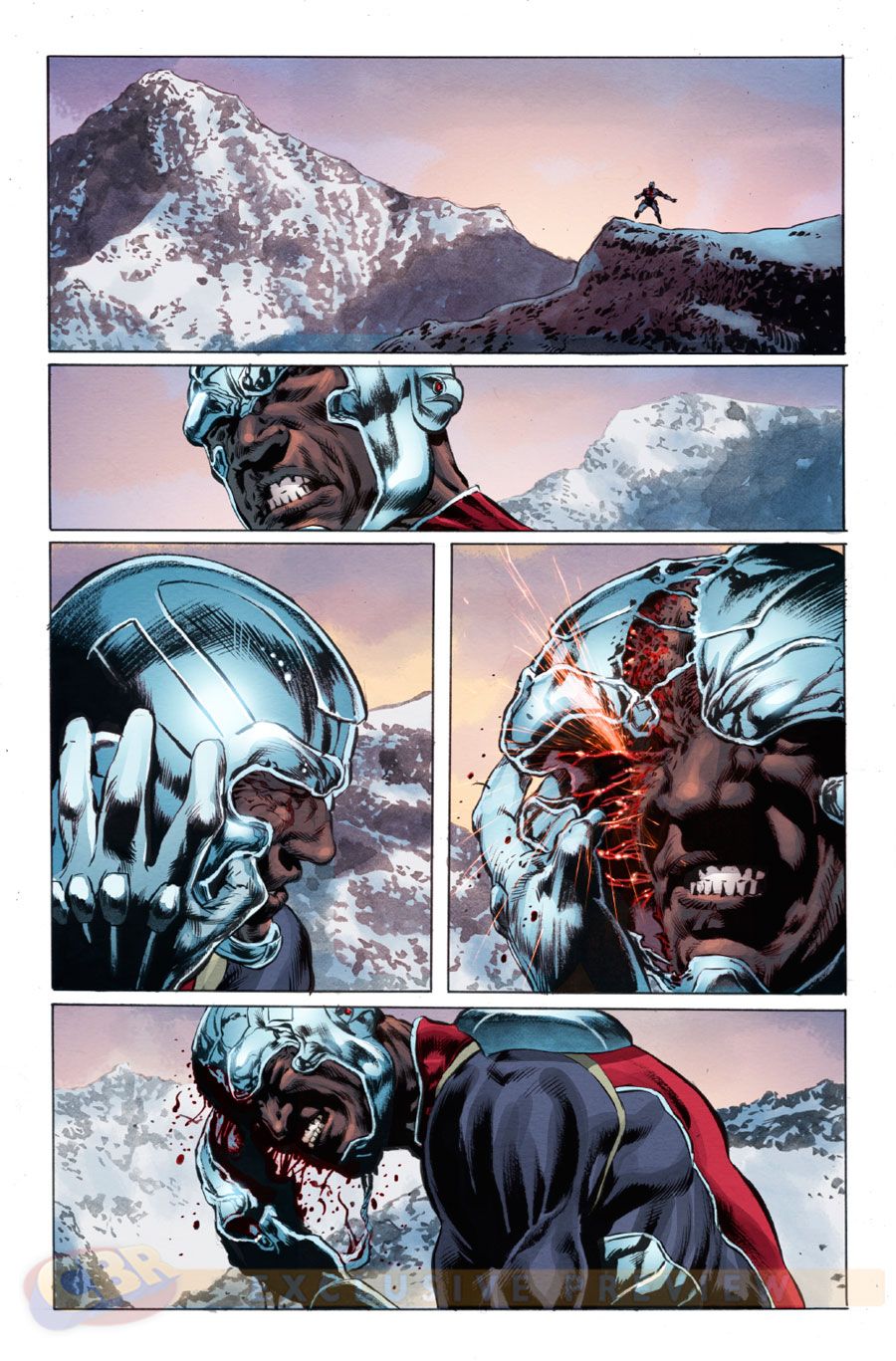When you're trying to create a new generation of super soldier by combining man and machine, you have to be very careful about the subjects you choose to experiment on -- a lesson Cybertek learned the hard way when it transformed idealistic family man Michael Collins into a Deathlok cyborg. That transformation happened in the 1990 "Deathlok series by Dwayne McDuffie, Gregory Wright and Butch Guice, and as Marvel Comics fans saw, it resulted in Collins setting out to take down the corrupt men who transformed him.
In writer Nathan Edmondson and artist Mike Perkins' "Deathlok" series, history is repeating itself as another shadowy corporation, Biotek, has transformed a strong-willed soldier turned single father named Henry Hayes into the latest Deathlok. Of course, Hayes broke the system Biotek was using to control him and regained his freedom; a move that put both him and his daughter in Biotek's crosshairs. It also lead to him coming face to face with Michael Collins and his allies, the mutant mercenary known as Domino and S.H.I.E.L.D. agent Andrea Hope.
Now, with one issue left, the newly-united Deathloks must contend with the treachery and might of Biotek. We spoke with Edmondson about bringing the Deathloks together, a story which actually kicked off at the start of his "Punisher" run, adding new characters to the Marvel Universe, and the joy of telling this story with Deathlok superfan Mike Perkins.
CBR News: Having planted the seeds for "Deathlok" back in the first arc of your "Punisher" run, how does it feel to have those seeds come into full bloom in these last few issues, with Domino and the Henry Hayes and Michael Collins Deathloks all coming face to face?
Nathan Edmondson: Marvel has been a gracious partner to allow our creative teams on these books to think wide. "Deathlok" has been a very special series in that we've created an entirely new world within the Marvel Universe for Henry Hayes. Connecting Domino's story threads between series rewards us as storytellers and rewards devoted readers, but it also evokes another layer of mystery and intrigue (you know, hopefully).
You rewarded the patience of Michael Collins fans by giving him some great action scenes, including ones where he and Henry fought against each other and side by side. In the past you mentioned it was pretty intimidating thinking about Collins and his creators, but you seem to have a pretty good handle on the character and enjoy writing him.
Yeah, it was a big consideration before taking on the book, but since then we've just put our heads down and written for ourselves. Mike had the fantastic idea to co-illustrate the cover for issue #9 with Butch Guice so we could pay our homage to Deathlok's legendary pedigree. Within the pages, we simply did our best to get the Collins' voice right.
"Deathlok" introduced readers to a variety of new characters, and your "Punisher" and "Black Widow" runs have also featured plenty of new characters as well. It seems like when writing company-owned books, you like to add to the "toy chest" of the larger universe. As a veteran of creator-owned books, do you have a sort of philosophy when it comes to creating new characters on a work for hire title?
As I said, we were able to craft an entire world for Henry. That's been true of "Punisher" and "Black Widow" as well, and continues to be true as I discuss other titles. I think it's necessary to have that freedom, to be given a wide canvas to paint a broad picture. I'm not sure that I'd say I have a philosophy, and creator-owned work has some very important distinctions from even the most original of company character runs.
For example, guest stars like Electro in "Punisher" don't need a back story or origin or introduction or any of that; in creator-owned work, everything starts at zero. In "Black Widow," by the way, much credit is due to [artist] Phil [Noto] for the villains; while we collaborated, the original ideas for Molot and the Iron Scorpion were his.
A hero is only as interesting as his villains, and our "takes" on Deathlok, Punisher and Black Widow were very unique. We needed villains and rogues galleries to match not just the caliber we were trying to fire with the characters, but the tone and theme of each story.
Deathlok #9 left all the characters in interesting situations. I know you can't say much for fear of spoilers, but what sort of hints can you offer up about issue #10?
I'm hoping the final issue will surprise all readers. In issue #9, we had the two Deathloks together, and the fun is where that led Henry. We've built to this major climax in issue #9, but what I love about it most is that this run ends in a very personal way for Henry.
We're at such a big spoiler-threat area with the bombshell #10 on the horizon. I can't really say much else about the issue without spoiling it.
Fair enough. Since we can't talk more about the final issue of "Deathlok," let's look back on the series. What issues of "Deathlok" are you most proud of, and why?
Oh, I have no idea how to answer that. I think Mike has gotten better with each issue, and I've gotten to know the characters better myself. There's very little in our "Deathlok" run that's one-and-done, so I have to reflect on the story as a whole, and I'm very happy with the journey. There are some moments that gave me the right kind of chills. I love Henry getting beaten up by some punk kids, not realizing he has the ability to level the city block if he needs to. He's just a dad trying to find his girl and getting his ass kicked.
From my perspective, a large part of what made "Deathlok" such a fun book was the action, humanity and cool tech brought to life by Mike Perkins. What are some of the things he, as a longtime Deathlok fan, added to the series that readers might not be aware of?
I strategized everything with Mike, so he's been a part of it from the get go. There were a few things he definitely wanted us to see in the telling, and some of that comes out in cool ways in #10. His fandom helped ensure that die-hard fans get the right fix from our story. As always, my writing is fairly spartan, so much of the detail of Deathlok and Biotek and the world around, not to mention the majority of character design, is all Mike.
"Deathlok" is coming to a conclusion around the same time your other Marvel titles are wrapping up. What's next for you, comic-wise? Do you have any more projects with Marvel lined up? Any new creator-owned projects?
I have a number of creator-owned titles that artists have been working far ahead on. I have more Marvel work that I can't speak about right now, and I'm pretty invested in some film and television projects.
As always, I want to conclude by saying thank you to our readers, and I'll see you on the other side of #10.




